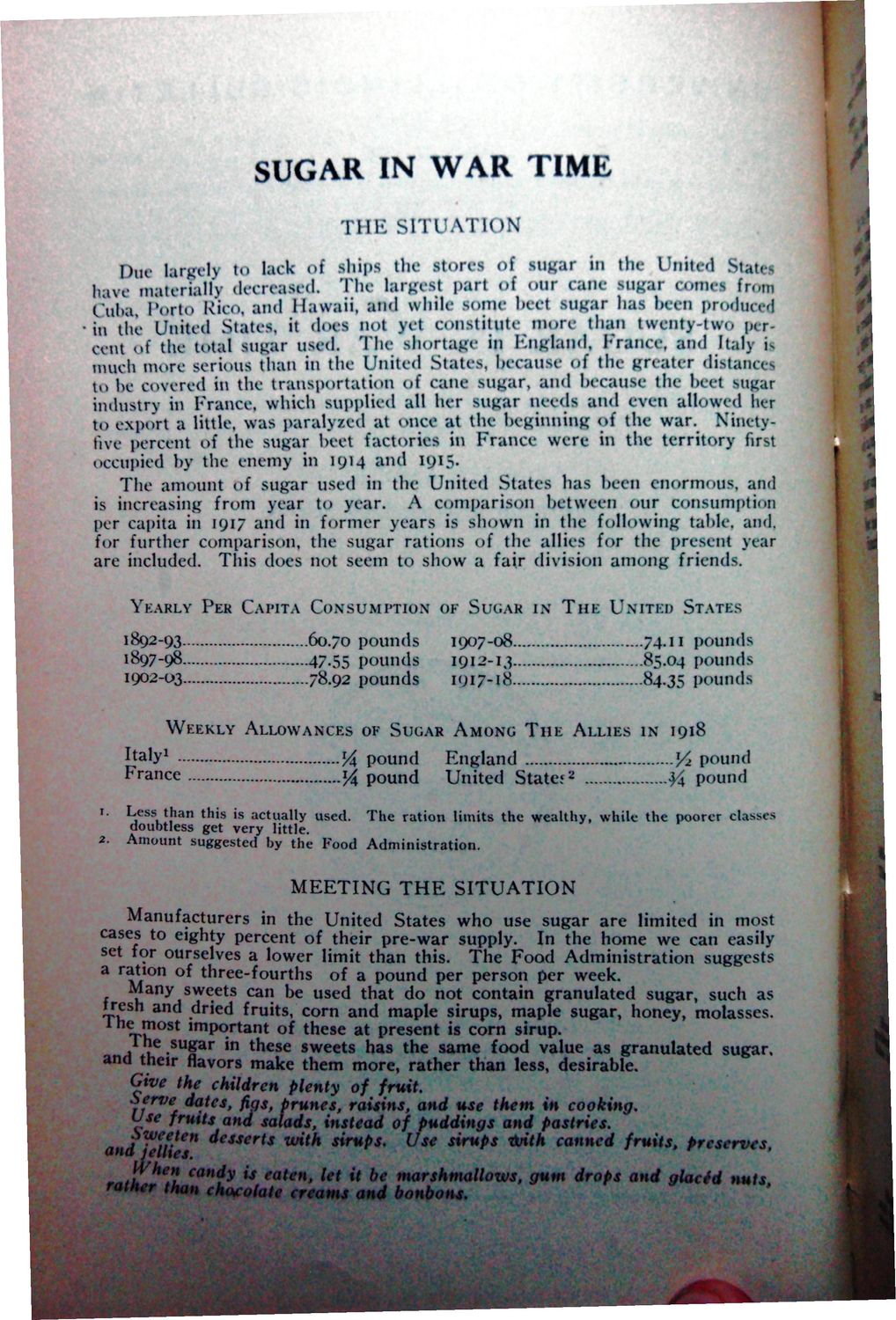| |
| |
Caption: War Publications - WWI Compilation 1923 - Article 12
This is a reduced-resolution page image for fast online browsing.

EXTRACTED TEXT FROM PAGE:
SUGAR IN WAR TIME THE SITUATION Due largely to lack of ships the stores of sugar in the United States have materially decreased. The largest part of our cane sugar comes from Cuba, Porto Rico, and Hawaii, and while some heet sugar has hem produced in tlie United States, it does not yet constitute mere than twenty-two percent of the total sugar v\svi\. The shortage in England, France, and Italy b much more serious than in the United States, because of the greater distances to he covered in the transportation of cane sugar, and because the beet sugar industry in France, which supplied all her sugar needs and even allowed her to export a little, was paralysed at once at the beginning of the war. Ninetyfive percent of the sugar beet factories in France were in the territory first occupied by the enemy in 1914 and 1915. The amount of sugar used in the United States has been enormous, and is increasing from year to year. A comparison between our consumption per capita in 1017 and in former years is shown in the following table, and. for further comparison, the sugar rations of the allies for the present year are included. This does not seem to show a fair division among friends. YKARLY PER CAPITA CONSUMPTION OF SUGAR IN T H E UNITED STATES 1892-93 1897-98 1902-03 60.70 pounds 47-55 pounds 78.92 pounds 1907-08 1912-13 1917-18 74.11 pounds 85.04 pounds 84.35 pounds 1918 WEEKLY ALLOWANCES OF SUGAR AMONG T H E ALLIES IN Italy France 1. 1 % pound 14 pound England 2 United State? l /2 pound V4 pound 2. Less than this is actually used. The ration limits the wealthy, while the poorer classes doubtless get very little. Amount suggested by the Food Administration. MEETING THE SITUATION * Manufacturers in the United States who use sugar are limited in most cases to eighty percent of their pre-war supply. In the home we can easily set for ourselves a lower limit than this. The Food Administration suggests a f IOn tnree ourtns M °* "^ °f a pound per person per week, a n y s w e t s cat f ¥ , S } be used that do not contain granulated sugar, such as tresh and dried fruits, corn and maple sirups, maple sugar, honey, molasses. St i m rtant TMT° P° of these at present is corn sirun. The sugar in these sweets has the sai food value as granulated sugar and their flavors make them more, rather Gtve the children plenty of fruit e a es ii™ 4 * } > fif*> prunes, raisins, and use them in cooking. Use fruits and salads, instead of Puddings and Pastries. with sirups. Use sirups *toith canned fruits, preserves when candy is eaten, let it be marshm rather than chocolate creams and bonbons nuts
| |